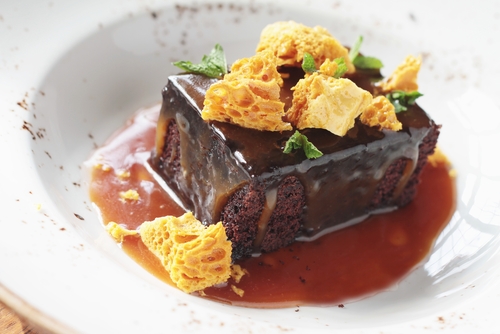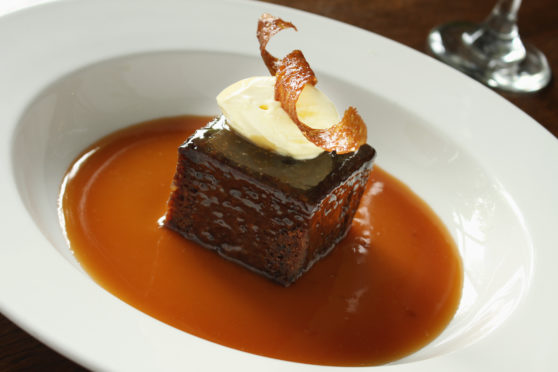The sponge-based pud has been voted first in class when it comes to desserts Brits love.
Being stuck at home has its benefits – especially when it comes to having that little extra time to bake up a range of sweet treats to indulge in.
Trying to perfect our favourite desserts and bakes has become somewhat of a weekly habit for many.
But what is the UK’s most-loved dessert? The humble sticky toffee pudding of course.
Desserts experts at Jackandbeyond.com have revealed the moist cake sponge covered in a rich toffee sauce is the nation’s favourite, ranking it on the Top Tier of their dessert list.
Other ‘Top Tier’ desserts the nation loves included profiteroles, red velvet and tiramisu.
But what’s the secret to a perfect sticky toffee pudding?
We caught up with Andy Stephen, head chef of No.10 Bar & Restaurant in Aberdeen to find out.
He said: “Sticky toffee pudding is the ultimate comforting dessert and continues to be one of the most popular dishes on the menu.
“Even if customers are full up after their mains, they always find room to enjoy a sticky toffee pudding, sometimes with a couple of spoons so everyone can get a taste.”
Sticky Toffee Pudding

Ingredients for the pudding:
- 250g soft brown sugar
- 340g self raising flour
- 160g salted butter
- 370ml water
- 2 tsp baking powder
- 6 whole large eggs
- 340g dates
- 2 tsp bicarbonate of soda
- 40ml Americano (black coffee)
Ingredients for the sauce:
- 100g salted butter
- 1 litre double cream
- 400g soft light brown sugar
Method for the pudding:
- Preheat oven to 180°C
- Roughly chop the dates and put into a deep pan with the water, bicarbonate of soda and coffee. Warm gently until dates have became soft and absorbed almost all of the water.
- Cream the butter and the sugar together with a electric mixer, until pale and smooth. Add the eggs a couple at a time, ensuring that they are combining properly, until completely mixed.
- Sift the flour and baking powder together and then add to the egg mix. Mix slowly until just combined.
- When the dates are done, add to the flour mixture and combine well.
- Pour mixture into a deep tray which has been lined with baking parchment.
- Fill another deep tray with 500ml of warm water and place in the bottom of the oven, this helps to generate steam while the pudding is cooking.
- Now place the tray with the pudding mix in the oven and cook for 20 to 30 minutes until it is well risen and firm to touch. If unsure if it’s fully ready, test with a cool knife or skewer – it should come out clean checking in the thickest part.
- Leave to cool completely.
Method for the sauce:
- Place all ingredients in a large deep pan. Bring to the boil and let it simmer gently for five minutes.
